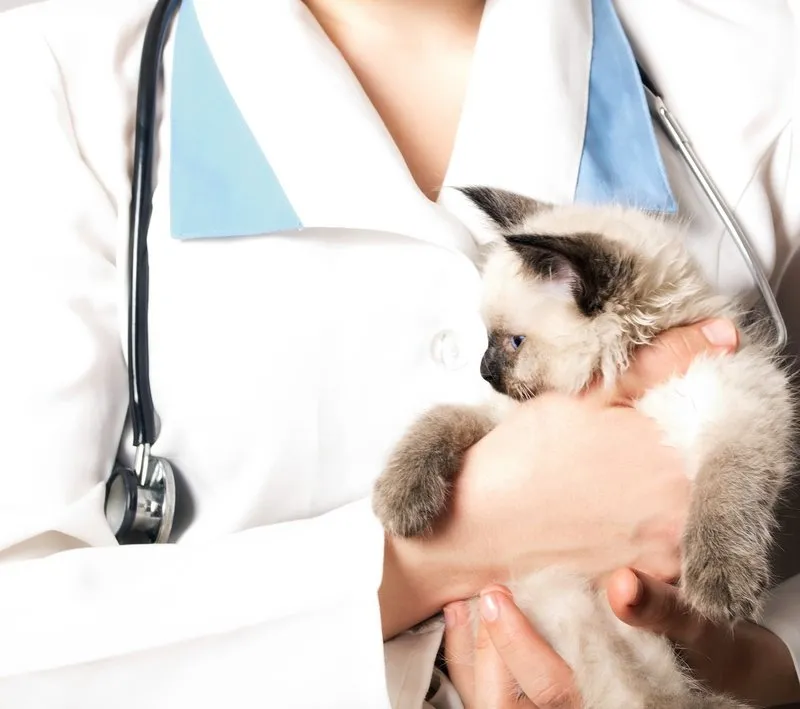Cats can be prone to developing arthritis as they age, just like people. When the tendons and ligaments that cushion and connect Fluffy’s bones get worn out, arthritis develops. Over time, they can thin and lose elasticity, causing a lot of pain and discomfort. While arthritis isn’t curable, it can be managed. However, treatments tend to be more successful when the issue is caught and addressed early. Here are some signs to watch for:
Trouble Getting Up And Down
Fluffy was quite lithe and active when she was a kitten, easily able to jump from the floor to the back of your chair. However, as your pet ages, she’ll become less bouncy. If arthritis sets in, you may notice your furry buddy having trouble jumping onto your couch or bed.
Stiffness
Arthritis can seriously impact your cute pet’s mobility. When Fluffy is first getting up or down, she may seem stiff. She may also limp, especially when she first gets up.
Difficulty Going Up And Down Stairs
Stairs can be a challenge for our feline pals. When you think about it, many stairs are taller than Fluffy! You may notice your cat really struggling to get from floor to floor.
Sensitivity
Sometimes one joint or area is affected more than others with arthritic cats. Fluffy may react if you touch a sensitive area. She may also move away, flinch, withdraw, or even hiss or bite.
Aggression
Joint pain can really interfere with Fluffy’s mood, turning her from a purring, cuddly snuggle bug to a hissing ball of rage. She may have arthritis if your feline buddy is acting unusually aggressive.
Loss of Interest In Play
Fluffy is very playful, which is always a delight to watch. However, joint pain can affect those frisky kitty antics we all love.
Unkempt Fur
When grooming themselves, cats with arthritis often have trouble bending and stretching. Fluffy may start looking a bit unkempt. (Tip: groom your little pal gently, using a soft brush.)
Sleeping More Than Usual
It may be hard to spot this one, given that cats spend so much time sleeping. However, if Fluffy seems even drowsier than usual, mention it to your vet.
Our Advice on Signs of Arthritis in Cats in 2024
At what age do cats typically begin to develop arthritis?
Cats can begin to show signs of arthritis as early as age seven, but it is more commonly diagnosed in cats over the age of ten. The likelihood of developing arthritis increases with age. Since cats are adept at hiding discomfort, early signs can often go unnoticed. Regular veterinary check-ups are important, as they can help detect the early onset of arthritis and other age-related conditions, allowing for timely management and treatment to maintain quality of life.
What diagnostic methods do veterinarians use to confirm arthritis in cats?
Veterinarians typically use a combination of clinical examination and imaging techniques to diagnose arthritis in cats. During the examination, the veterinarian assesses the cat’s joints for signs of pain, swelling, or decreased range of motion. X-rays are commonly used to visualize changes in joint structure, such as narrowing of the joint space or development of bone spurs. Advanced imaging options like MRI or CT scans may also be employed for a more detailed view. Additionally, a thorough history of the cat’s behavior and symptoms provided by the owner aids in diagnosis.
Are there any preventative measures cat owners can take to reduce the risk of arthritis in their pets?
To reduce the risk of arthritis in cats, owners can ensure their pets maintain a healthy weight, as obesity significantly increases the stress on joints. Providing a balanced diet rich in omega-3 fatty acids can also help by reducing inflammation. Regular exercise through play encourages mobility and helps keep joints supple. Additionally, providing soft bedding and easy access to litter boxes and feeding areas can minimize joint strain. Regular veterinary check-ups allow for early detection and management of conditions that could contribute to arthritis.
How does cold or damp weather affect cats with arthritis?
Cold or damp weather can exacerbate arthritis symptoms in cats, leading to increased joint pain and stiffness. These weather conditions may cause the synovial fluid, which lubricates joints, to thicken, resulting in reduced joint mobility and comfort. Cats with arthritis might become more reluctant to move, appear stiffer upon waking or after resting, and may exhibit more pronounced limping during colder periods. To alleviate discomfort, providing a warm, comfortable resting area and keeping the home environment consistent in temperature can help manage these effects. While we’re discussing cold weather effects on pets, dog owners might be interested in our article on Winter Paw Care Tips For Fido, which offers advice on protecting canine paws during the colder months.
What dietary changes or supplements might be beneficial for cats with arthritis?
For cats with arthritis, dietary adjustments and supplements can play a crucial role in managing symptoms. Incorporating foods rich in omega-3 fatty acids, such as fish oil, can help reduce joint inflammation and pain. Glucosamine and chondroitin supplements are also commonly recommended to support joint health and cartilage repair. Additionally, maintaining a lean body weight is essential, so a balanced, low-calorie diet may be necessary to prevent excess weight that can stress arthritic joints. Always consult a veterinarian before starting any new supplements or diet changes.
Keep in mind that many of these symptoms may be related to a variety of medical issues. If you notice any of these red flags in your kitty, it’s crucial to get a proper diagnosis. Our Veterinary Diagnostics service uses state-of-the-art technology to accurately diagnose arthritis and other conditions in cats. From X-rays to advanced imaging techniques, we can provide a comprehensive evaluation of your pet’s joint health. Contact your vet in Carlisle, ON if you notice any of these red flags in your kitty!




!Social Media Icons